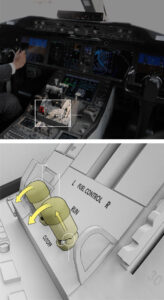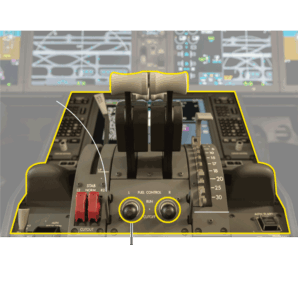Airlines in India, Singapore and South Korea were inspecting fuel control switches on their Boeing jets.

Regulators in India and South Korea ordered inspections this week of fuel control switches on Boeing airplanes after a report on a deadly Air India crash showed that the plane’s fuel supply had been cut.
Singapore Airlines also said on Tuesday that along with its low-cost subsidiary, Scoot, it had completed inspections of the switches on Boeing planes.


Indian investigators’ preliminary assessment of the crash on June 12 of Flight 171, which was published on Saturday, did not draw any final conclusions about the cause. It appeared to rule out mechanical failure or design flaws, narrowing the focus to the fuel switches on the Boeing 787 jet that crashed.
The most striking finding was that the two fuel control switches on the crashed jet were switched off seconds after takeoff, one after the other. Each switch is equipped with a locking mechanism to prevent accidental movement, leading experts to suggest it was unlikely they were moved without human involvement.
The report and India’s inspection order referred to an advisory from the Federal Aviation Administration in 2018 that recommended that carriers using Boeing models, including the 787, inspect the locking mechanism of the fuel control switches to ensure they could not be moved accidentally.
The preliminary report said that Air India had not carried out the suggested inspections because they were not mandatory. The authors said that the F.A.A. had not viewed the concerns about the locking feature as serious enough to be considered unsafe.
The report said Air India had twice replaced the larger throttle module that the fuel switches were part of, in 2019 and 2023. The replacements were not related to the fuel switch, it said. The part would most likely have been inspected before installation to ensure the locking mechanism worked as intended, said John Cox, a former airline pilot and chief executive of Safety Operating Systems, a consulting firm.
The F.A.A. said in a statement that it had notified airlines about the Indian preliminary report. In a message to other civil aviation authorities after the release of the report, the F.A.A. reaffirmed its conclusion that the issue highlighted by the 2018 advisory did not pose “an unsafe condition.” Boeing also notified operators about the report and said that it recommended no further action at this time.
India’s Directorate General of Civil Aviation, which issued its directive on Monday, said that airlines operating Boeing models should complete the inspections by July 21.
On Tuesday, Air India said it would reinstate certain routes it had put on hold after the air crash, which had caused flight cancellations and delays as the airline carried out inspections of its Boeing Dreamliner fleet. The conflict between Iran and Israel last month added to Air India’s woes because many Gulf countries closed off their skies temporarily, forcing it to reroute some planes. The airline said it expects to run flights on a normal schedule by Oct. 1.
The South Korean Transport Ministry’s directive on Tuesday ordered that the fuel switches be inspected, something it had previously not required. The ministry’s statement did not give a deadline.
Singapore’s Civil Aviation Authority said that it was working with airlines on the inspections. Singapore Airlines and Scoot said that all its fuel switches were functioning properly. Singapore’s third airline, Jetstar Asia, which is shutting down this month, does not operate any Boeing planes.
The preliminary report on the crash described a confused interaction between the pilots about the interrupted fuel supply.
“In the cockpit voice recording, one of the pilots is heard asking the other why did he cut off” the fuel, the report said. “The other pilot responded that he did not do so.”
About 10 seconds later, the switches were turned back on, but the plane could not regain power quickly enough to stop its descent. The report said that “there are no recommended actions” to the aircraft and engine manufacturers, Boeing and GE Aerospace respectively.
The Air India plane crashed into the dining hall of a medical college before exploding in flames. Altogether, 260 people were killed in the crash, including 19 on the ground, the report said.
Criticism has been brewing in India against a perceived lack of transparency in the investigation and news reports that seemed to assign blame on pilot error prematurely.
The Airline Pilots’ Association of India said in a statement on Saturday that the “tone and direction of the investigation suggest a bias toward pilot error.”
Pragati K.B. and Anupreeta Das contributed reporting from New Delhi, and Niraj Chokshi from New York.


